Buzz Buttons (Electric Daisy, Eyeball Plant, Paracress, Sichuan Buttons, Toothache Plant), scientifically known as Acmella oleracea, is a fascinating annual from the Asteraceae family. Native to the tropical regions of South America, this unique plant is prized not only for its vibrant blooms but also for its remarkable antiseptic properties, which inspire its common nickname, the “Toothache Plant.”
Belonging to the species oleracea, Buzz Buttons thrives in warm climates and is valued for both its ornamental appeal and practical uses. Its ability to produce a tingling, numbing sensation when chewed has made it a favorite for herbal remedies and culinary adventures alike.
| Common name | Buzz Buttons, Electric Daisy, Eyeball Plant, Paracress, Sichuan Buttons, Toothache Plant |
| Botanical name | Acmella oleracea |
| Family | Asteraceae |
| Species | oleracea |
| Origin | South America |
| Life cycle | Annual |
| Plant type | Herbaceous Perennial |
| Hardiness zone | 9, 10, 11 |
| Sunlight | Full Sun |
| Maintenance | Low |
| Soil condition | Clay |
| Soil ph | Acid |
| Drainage | Well-Drained |
| Growth rate | Fast |
| Spacing | 12 in. – 3 ft. |
| Flowering period | Fall |
| Height | 1 ft. – 1 ft. 6 in. |
| Flower color | Gold, Yellow |
| Leaf color | Brown, Copper |
| Fruit color | Black |
| Stem color | Green |
| Fruit type | Achene |
| Leaf benefit | Edible |
| Flower benefit | Good Cut |
| Uses | Container |
I. Appearance and Characteristics
Acmella oleracea is a species of flowering herb in the family Asteraceae. Common names include toothache plant, Szechuan buttons, paracress, jambu, buzz buttons, tingflowers and electric daisy. Its native distribution is unclear, but it is likely derived from a Brazilian Acmella species. A small, erect plant, it grows quickly and bears gold and red inflorescences. It is frost-sensitive but perennial in warmer climates.
Its specific epithet oleracea means “vegetable/herbal” in Latin and is a form of holeraceus (oleraceus).
The toothache plant is also known as the eyeball plant and peek-a-boo plant in reference to its alien-looking flowers. Resembling something akin to a daisy at first, upon closer inspection the blooms of Spilanthes toothache plant are shaped like yellow 1-inch (2.5 cm.) olives with a shocking deep red center — very much like those of a large mammal. Toothache plant is a member of the Asteraceae family, which includes asters, daisies, and cornflowers but with a truly unique flower and memorable numbing effect when ingested.
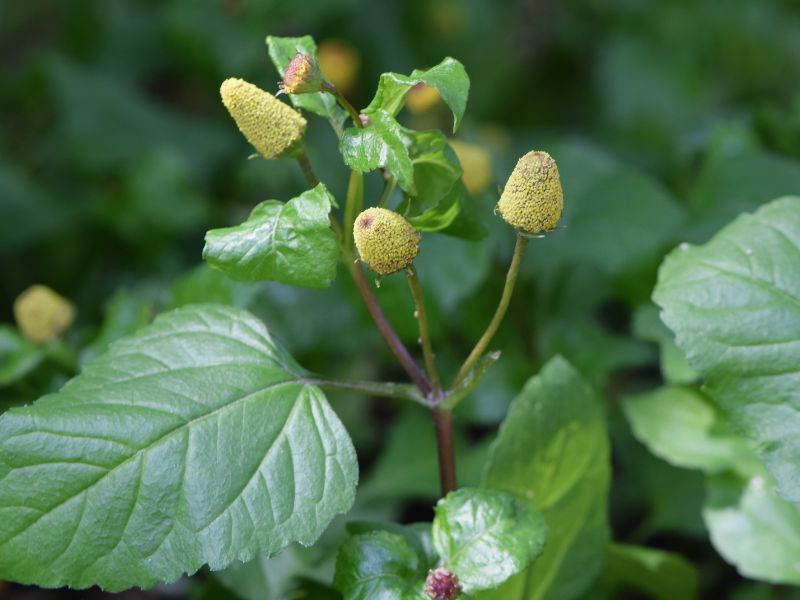
Spilanthes plantings bloom from mid-June through September and are wonderful additions to border gardens, as accent plants or container vegetation with their bronze-hued foliage and eye-popping blooms. Growing only about 12 to 15 inches (30.5-38 cm.) tall and 18 inches (45.5 cm.) across, Spilanthes plantings complement other plants with yellow and red blooms or even foliage such as coleus varietals.
This plant prefers well-drained, black (high organic content) soil. If starting outdoors, the seeds should not be exposed to cold weather, so start after last frost. Seeds need direct sunlight to germinate, so should not be buried.
II. How to Grow and Care
Sunlight
Toothache plants prefer full sun to part shade. Too much shade will cause plants to become leggy and stop producing flowers.
Temperature and Humidity
Coming from the tropics, these plants thrive in warm temperatures and high humidity. Frost will damage or kill toothache plants; provide protection from freezing temperatures to keep plants going in fall.
Soil and Water
These plants prefer loamy, well-drained soils with plenty of organic matter like compost mixed in. Keep plants consistently watered, but avoid soggy soil, which can cause root rot.
Fertilizing
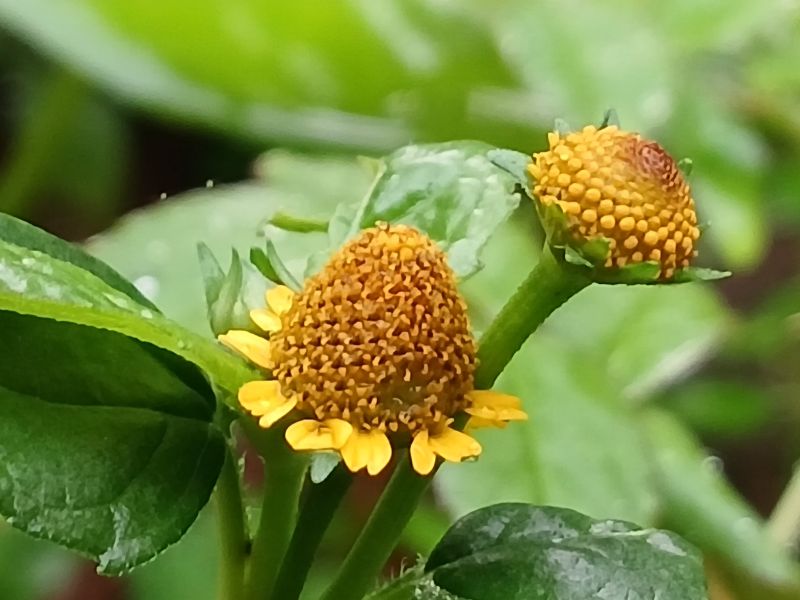
Feed with a well-balanced organic fertilizer once a week while plants are young. As flower buds begin to appear, switch to a bloom-boosting mix high in phosphorus to encourage continued blooming throughout the growing season.
Planting Instructions
Toothache plants require full sun (8+ hours per day) and loamy, organically enriched soils to thrive. They can be planted in pots or in the ground.
Sow toothache plant seeds outdoors after the danger of frost has passed. You can also start seeds indoors 6 weeks before your area’s last frost date, then transplant them outdoors. For best performance, add an organic granular fertilizer to the soil at planting time.
Pruning
As flowers begin to age, deadhead plants regularly extend their blooming period. These low-growing plants otherwise don’t require any additional pruning.
Propagation
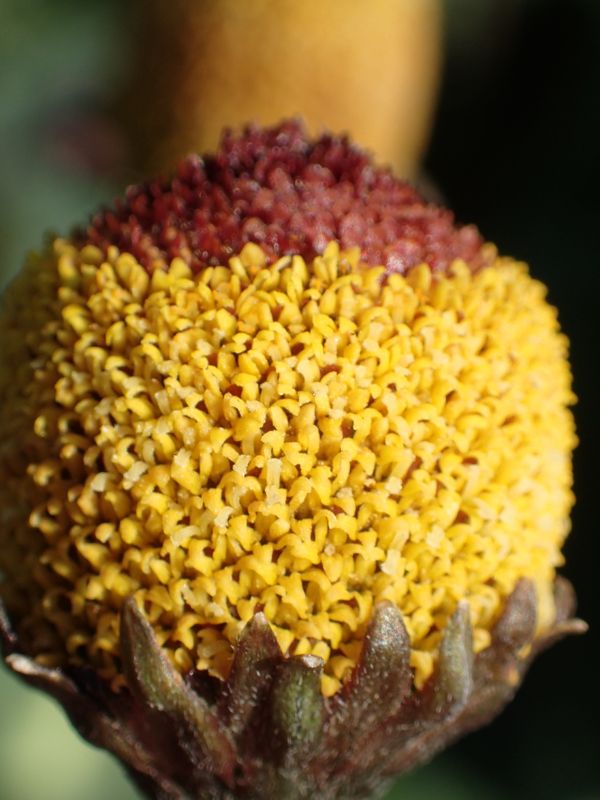
Toothache plants can be propagated by both seeds and cuttings.
Seeds
- Prepare a seed-starting potting mix by thoroughly wetting the medium and placing it into seed trays.
- Sprinkle a few toothache plant seeds onto the soil surface of each cell. Toothache plant seeds require light for proper germination.
- Place a clear plastic lid or wrap over trays to maintain humidity, then move seed trays to a warming pad. Mist regularly to keep the soil moist at all times.
- Trays should be kept in bright, indirect light or under artificial lighting.
- Seedlings should begin to germinate within 1 to 2 weeks after planting.
- After the danger of frost has passed, transplant seedlings to the garden or in pots.
Cuttings
- Using a pair of sharp, disinfected shears, make 6-inch cuttings from the mother plant and remove all but the top pair of leaves.
- Dip base of each cutting about 1 inch into powdered rooting hormone and gently shake off any excess.
- Place cuttings into individual pots, about 3 inches deep in moist potting soil, being careful not to wipe off the rooting powder.
- Place cuttings in a warm, humid location with bright indirect light or under a grow light.
- After a third set of leaves have been produced or you notice roots have begun to come out of the bottom of the containers, transplant cuttings into larger containers.
Pests and Diseases
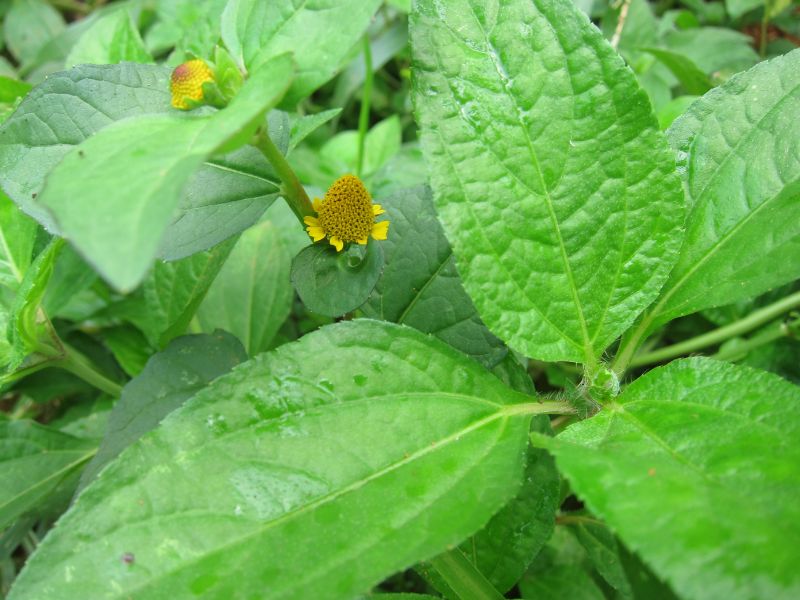
While toothache plants aren’t usually bothered by deer and rabbits, these creatures may still nibble on leaves and flowers. Pests such as aphids, mealybugs, and spider mites can be remedied by spraying them off the plants with water. For stubborn infestations, an application of organic pesticide such as neem oil can get pests under control, although this treatment isn’t recommended If you intend to consume your plant.
III. Uses and Benefits
- Medicinal uses
Spilanthes is an herb used in folk medicine throughout India. Of primary medicinal use are the roots and flowers of toothache plants. Chewing on the blooms of the toothache plant causes a local anesthetic effect and has been used to temporarily ease the pain of, yes, you guessed it — toothaches. Spilanthes flowers have also been utilized as a urinary antiseptic and even as a treatment for malaria by the indigenous people of the tropics. The active ingredient in Spilanthes is called Spilanthol. Spilanthol is an antiseptic alkaloid found throughout the entire plant but with the greatest amounts located in the flowers.
- Culinary uses
For culinary purposes, small amounts of shredded fresh leaves are said to add a unique flavor to salads. Cooked leaves lose their strong flavor and may be used as leafy greens. In Madagascar, the plant is known as brèdes mafane, and is a main ingredient in the national dish of the island, called Romazava. Both fresh and cooked leaves are used in dishes such as stews like Tacacá in northern Brazil, especially in the state of Pará. They are combined with chilis and garlic to add flavor and vitamins to other foods.
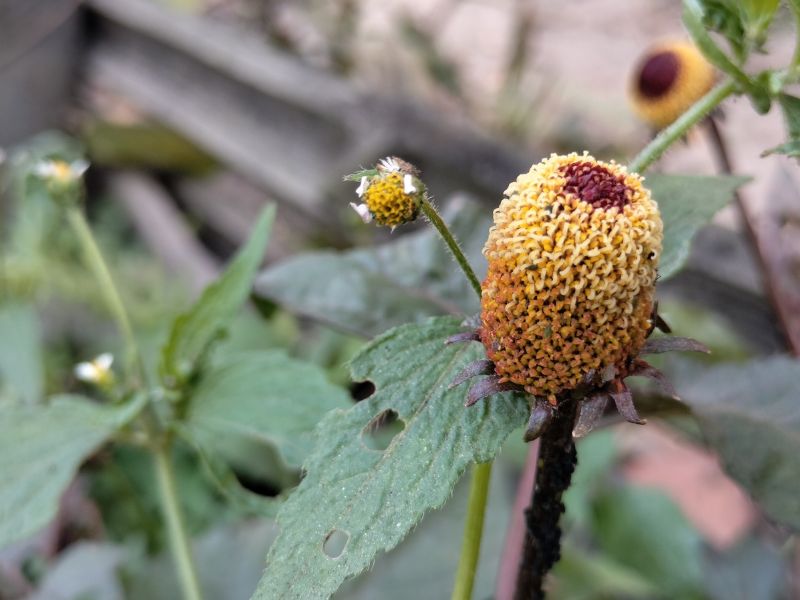
The flower bud has a grassy taste followed by a strong tingling or numbing sensation and often excessive salivation, with a cooling sensation in the throat. The buds are known as “buzz buttons”, “Sichuan buttons”, “sansho buttons”, and “electric buttons”. In India, they are used as flavoring in chewing tobacco.
Jambu extract as a flavoring agent is described as having a citrus, herbal, tropical or musty odor, and its taste can be described as pungent, cooling, tingling, numbing, or effervescent. Spilanthol, the major constituent of jambu extract, is responsible for the perception of a mouth-watering flavor sensation, as well as the ability to promote salivation as a sialogogue, perhaps through its astringent action or its pungent taste.








Leave a Reply